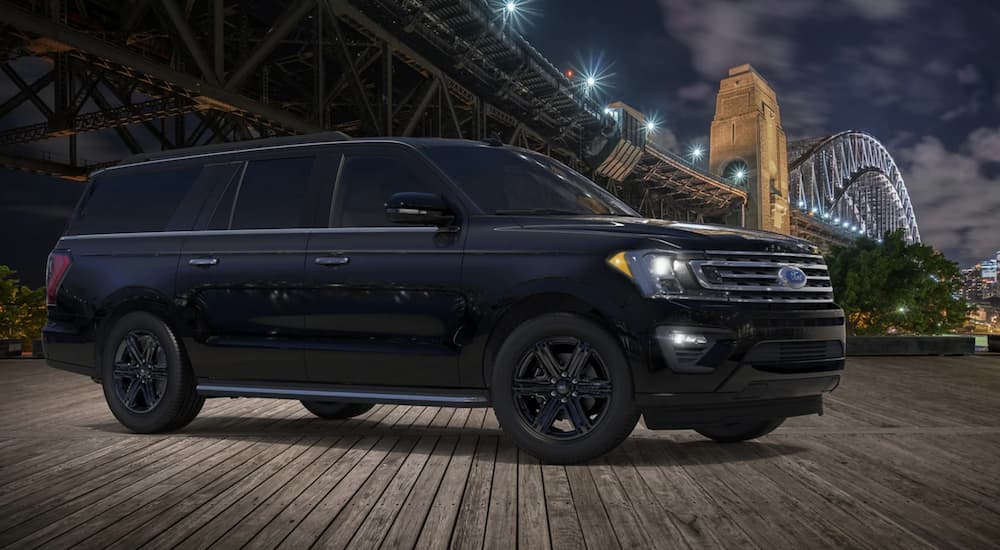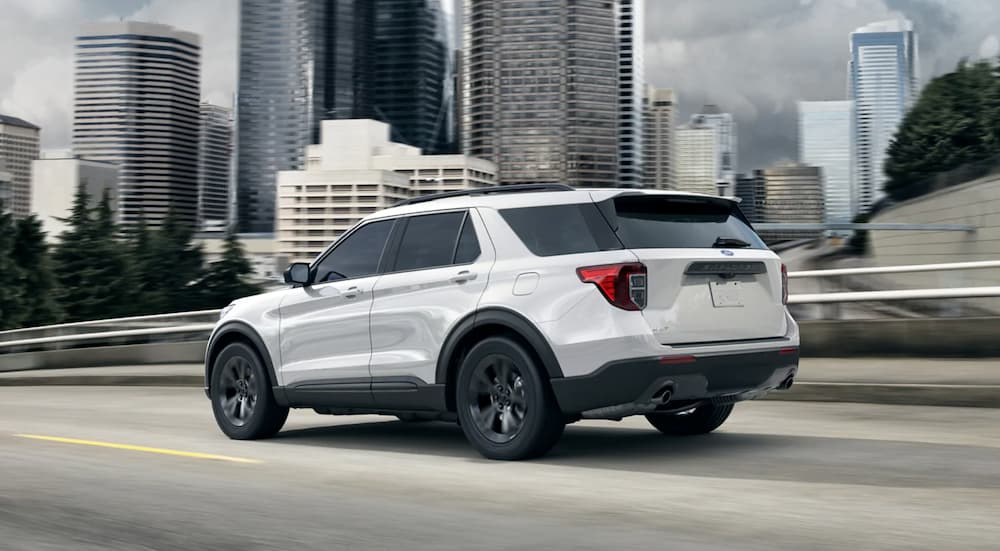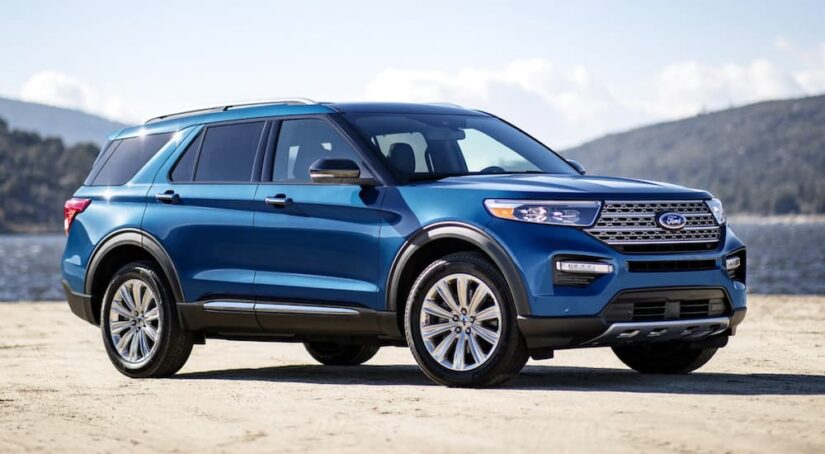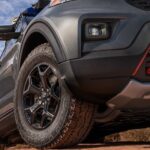The Ford Expedition and Ford Explorer are two popular SUVs from the iconic American vehicle manufacturer. Both models have been part of the Ford lineup since the 1990s and have brought Ford many awards, gaining praise for safety, resale value, comfort, and more. If you’re looking for a used Ford dealership to find the ideal pre-owned SUV for your day-to-day life, there are some important distinctions to understand about these two models. Below, we’ll cover the main considerations, focusing on the 2021 models.
Seating Capacity
The Ford Explorer and Ford Expedition have different seating capacities, with some overlap. Since the largest Expedition costs a significant amount more than the Explorer, it’s important to consider if you need the extra space that it offers.
The Expedition Offers Seating for up to Eight
In the Expedition, you can opt for bench row seats in the second and third rows for a total of eight seats. Or you can get captain’s chairs in the second row for a total of seven seats. If you have a handful of little ones to pick up and drop off daily from school, you might need the full eight seats available in the Expedition.
The Explorer Has Seating for up to Seven
The Explorer has seating for either six or seven passengers. Opt for second-row captain’s chairs for six or a second-row bench seat for seven. Thanks to its smaller size option, the Explorer could be a good choice for families with only two or three children and are focusing on financial goals. When these models first hit the market, the Expedition’s starting MSRP was significantly higher than that of the Explorer, so a pre-owned Explorer will likely have a significantly lower price tag than most pre-owned Expeditions.
Cargo Capacity
Since the Expedition is overall larger than the Explorer, it also enjoys more cargo volume. In fact, it has twice the overall cargo volume of the Explorer. If your days involve lugging tons of gear between schools to parks for sports games and play dates, you might require the extra cargo capacity of the Expedition. However, if you don’t have substantial cargo needs, the trunk space of the Explorer could fit your requirements. Both vehicles boast split-folding rear seats, so you always have the option to create more cargo space when you need it.
Towing abilities are a part of the cargo conversation because bringing a trailer or similar vessel with you greatly increases how much stuff you can take on the road. The towing abilities of the Explorer sit in the low 5,000-pound range (it varies depending on whether or not you add the Tow Package). The Expedition, on the other hand, when equipped with the heavy-duty Trailer/Tow Package, can tow up to 9,300 lbs. So the question is: are you a family that camps/adventures together? If so, you’ll need the Expedition’s towing powers to bring essentials like camping pods and boats to your destinations.
Fuel Economy
When you stay in town, it can be hard to connect with your family because daily responsibilities keep you all so busy. That’s why some families here enjoy getting out of town on a regular basis. If that sounds like you, it’s important to know that the Explorer gets better fuel economy than the Expedition.
The Expedition’s fuel economy is fine for driving within town and running regular errands. However, take it on frequent road trips, and you’ll find yourself at the gas pump a lot. The Explorer, on the other hand, gets more serviceable figures for road trips. This is partly due to one major difference between the Explorer and the Expedition: only the former is available in a hybrid powertrain.
The ability to get the Explorer in a hybrid makes a big difference for some shoppers. Since it can seat up to seven passengers, drivers with large families who like to leave town can get the best of all worlds with a 2021 Explorer hybrid. Plus, since its battery recaptures energy through regenerative braking, it comes in handy should you find yourself in stop-and-go traffic.

Engine Options
We already touched on the fact that the Explorer has a hybrid powertrain, and the Expedition does not. Overall, the Explorer has a larger engine menu than the Expedition. You’ll find the engine breakdowns for each model below.
The Explorer
The base engine is the 2.3L EcoBoost I-4 and achieves the best fuel economy of the traditional gas engine models. It offers 300 hp and 310 lb-ft of torque. Moving up, there is the 3.0L EcoBoost V6. This engine gets you 365 hp and 380 lb-ft of torque, and excellent acceleration. There is also another variation of the 3.0L EcoBoost V6 that is exclusive to the ST trim; this engine will produce an impressive 400 hp and 415 lb-ft, along with some of the best fuel economy in the Explorer lineup, 27 MPG in the city and 28 MPG on the highway to be exact.
The Expedition
Those looking for an array of engine options may be disappointed with what is offered by the Expedition, although its two options certainly come with immense capabilities. The standard engine offered on most trims is the 3.5L EcoBoost V6. With 375 hp and torque of 470 lb-ft, this engine is ready to meet your demands for power and acceleration. The other option is a Platinum trim-exclusive version of the 3.5L EcoBoost V6. The souped-up version takes the horsepower up to 400 hp and the torque up to 480 lb-ft. If you want more versatility in your engine options, check out a used Explorer. If you know that maximum power matters to you, the Expedition’s options should have you covered.
Terrain Management Systems
Both of these vehicles boast drive modes as part of the Terrain Management System. They are nearly identical for the two. The Explorer’s modes are Deep Snow/Sand, Eco, Normal, Sport, Tow/Haul, Trail, and Slippery. The Expedition’s modes are Sand, Eco, Normal, Sport, Tow/Haul, Mud/Rut, and Grass/Gravel/Snow. Between these seven modes, you should be ready to tackle nearly any environment in both of these vehicles.

Which SUV Is for You and Your Family?
A large SUV is the perfect vehicle style for many families needing space and ample strength. Whether you’re busy driving between soccer practices or taking everyone on weekend road trips, you’ll want the space and four-wheel drive capabilities of these two models. Mother Nature is predictable, and you never know what sort of terrain you’ll cover, and either of these models is ready to handle it.
The main differences between the Explorer and Expedition come down to passenger capacity, cargo capacity, and powertrain options. As a part of the powertrain difference, there is a significant fuel efficiency discrepancy, too. If you have a small family that likes to explore, a two-row hybrid Explorer could give you everything you need. If you have a large family that sticks within town, an eight-seater Expedition might best fit your lifestyle. Now that you understand these models’ main differences, you should be ready to begin your shopping process.



